Dormant Bleeding Heart Plants – How To Plant A Bare Root Bleeding Heart
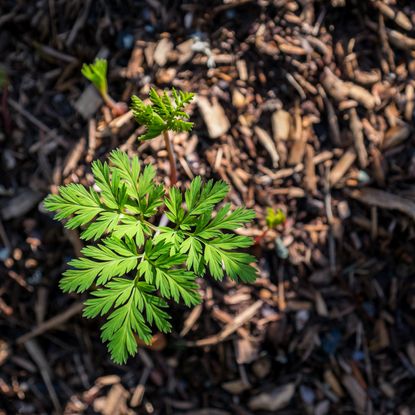

An old-fashioned favorite of many gardeners, the bleeding heart is a reliable, easy-to-grow perennial for zones 3 through 9. Native to Japan, bleeding heart has gone in and out of popularity for hundreds of years throughout Asia, Europe, and America. With newer flower colors, foliage textures, and reblooming varieties widely available, it is once again a popular addition to partially shaded gardens. Thanks to the World Wide Web, getting your hands on the latest trending variety of bleeding heart is easier than ever. However, gardeners who are used to purchasing growing plants at nurseries or garden centers might get quite a shock when the bleeding heart plant they ordered online arrives as a bare root plant. Continue reading to learn how to plant a bare root bleeding heart.
Dormant Bleeding Heart Plants
Online nurseries and mail order catalogs usually sell bare root bleeding heart plants. While bleeding hearts purchased as container grown plants can be planted almost anytime, bare root bleeding hearts should only be planted in springtime. Ideally, you'll order from a reputable online nursery or mail order catalog, which will only have these plants available for sale during the appropriate time to plant them. However, if you do receive your bare root bleeding heart plants too early to plant them, you can keep them cool and moist in the refrigerator for a few weeks until you are able to. Another option would be to plant them in pots and transplant them into the garden later.
How to Plant a Bare Root Bleeding Heart
Bleeding heart grows best in a location with light shade. They do well in any average garden soil, though they prefer it to be slightly acidic. They cannot tolerate heavy clay or soggy soil, and they are susceptible to root and crown rots in these conditions. Keep these things in mind as you select a site to plant bleeding heart with bare roots. Unlike container bleeding hearts, they will be directly and immediately exposed to whatever soil you place them in and more susceptible to rots. Before planting bare root bleeding heart, soak them in water for an hour to rehydrate them, but do not let them soak any longer than four hours. In the meantime, loosen up the soil in the planting site at least a foot (31 cm.) deep and wide. Dig a hole large enough to accommodate the bare root plant. This won't need to be very deep. When you plant a bleeding heart with bare roots, the plant crown should stick slightly above the soil level and the roots should be spread out. The best way to accomplish this is to create a cone or mound of soil in the center of the hole you've dug. Place the bare root plant crown on the top of the mound so that its plant crown will stick out slightly above the soil. Then spread the roots so that they spread over and down the mound. Slowly refill the hole with soil, holding the bare root plant in place and lightly tamping down the soil as you refill it to prevent air bubbles. Give it some water and soon enough you should begin to notice new growth. That’s all there is to bare root planting of bleeding heart.
Gardening tips, videos, info and more delivered right to your inbox!
Sign up for the Gardening Know How newsletter today and receive a free download of our most popular eBook "How to Grow Delicious Tomatoes."
-
 Urban Composting Guide: How To Compost In The Middle Of The City
Urban Composting Guide: How To Compost In The Middle Of The CityUrban composting does not have to be daunting. You can compost in the city, and maybe even try some urban worm composting!
By Mary Ellen Ellis
-
 Shrub Diseases And Pests To Watch Out For
Shrub Diseases And Pests To Watch Out ForShrub diseases and pests can be challenging. Learn how to recognize and eradicate them before they can present a danger to your plants.
By Susan Albert
-
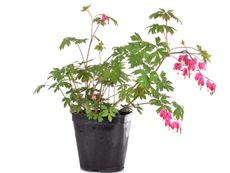 Houseplant Bleeding Heart Care – Growing A Bleeding Heart Plant Inside
Houseplant Bleeding Heart Care – Growing A Bleeding Heart Plant InsideIn order to be able to grow bleeding heart as a houseplant, it is important to know the conditions that this plant enjoys outdoors.
By Raffaele Di Lallo
-
 Bleeding Heart Color Change – Do Bleeding Heart Flowers Change Color
Bleeding Heart Color Change – Do Bleeding Heart Flowers Change ColorKnown for their lovely heart-shaped blooms, the most common color of which is pink, the gardener may find that a previously pink bleeding heart flower is changing color. Is that possible? Do bleeding heart flowers change color and, if so, why? Find out here.
By Amy Grant
-
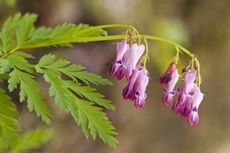 Caring For Bleeding Hearts: How To Grow A Fringed Bleeding Heart Plant
Caring For Bleeding Hearts: How To Grow A Fringed Bleeding Heart PlantWhile the old-fashioned Asian native bleeding heart (Dicentra spectabilis) is the most commonly used type in gardens, growing fringed bleeding heart varieties is gaining popularity. What is a fringed bleeding heart? Click here for more information.
By Darcy Larum
-
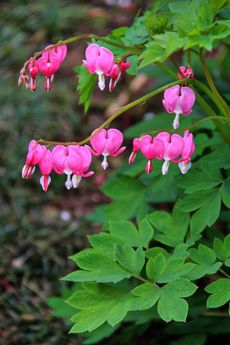 Bleeding Heart Pest Problems – Common Bugs That Eat Bleeding Heart Plants
Bleeding Heart Pest Problems – Common Bugs That Eat Bleeding Heart PlantsBleeding heart is an old-fashioned perennial that adds color and charm to shady spots in your garden. While the plant is surprisingly easy to grow, it can fall prey to a number of pesky insects. If you think something is bugging your plant, click here to learn more.
By Mary H. Dyer
-
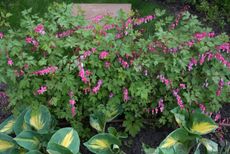 Bleeding Heart Diseases – Recognizing Diseased Bleeding Heart Symptoms
Bleeding Heart Diseases – Recognizing Diseased Bleeding Heart SymptomsBleeding heart (Dicentra spectablis) is a relatively hardy plant in spite of its lacy foliage and delicate, dangling blooms, but it can be plagued by a handful of diseases. Click on the following article to learn about common diseases of bleeding heart plants.
By Mary H. Dyer
-
 Caring For Bleeding Heart Transplants – How To Transplant A Bleeding Heart Plant
Caring For Bleeding Heart Transplants – How To Transplant A Bleeding Heart PlantGot a bleeding heart plant that always looks spindly, yellow and barely producing any flowers? If you find yourself in a circumstance like this and need to move a bleeding heart plant, then click on the article that follows for information on transplanting bleeding hearts.
By Darcy Larum
-
 Winterizing A Bleeding Heart Plant – How To Overwinter A Bleeding Heart
Winterizing A Bleeding Heart Plant – How To Overwinter A Bleeding HeartBleeding heart bushes bring a colorful and Old World charm to any garden. But what should you do when temperatures start to drop? Click here to learn more about bleeding heart winter care and how to protect a bleeding heart during winter.
By Liz Baessler
-
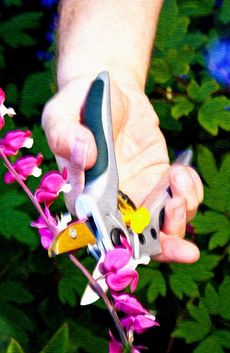 Tips For Bleeding Heart Pruning – How To Prune A Bleeding Heart Plant
Tips For Bleeding Heart Pruning – How To Prune A Bleeding Heart PlantBleeding heart plants are beautiful perennials that produce very distinctive heart-shaped flowers. But how do you keep one in check? Does it need regular pruning, or can it be allowed to grow on its own? Learn more about how and when to prune bleeding hearts here.
By Liz Baessler